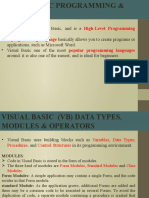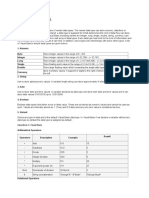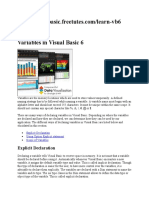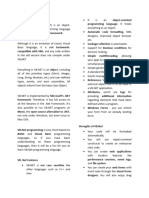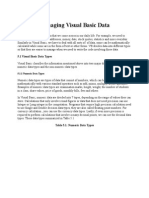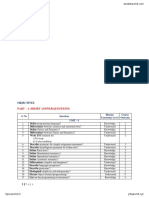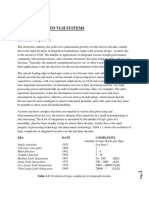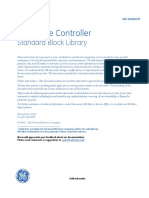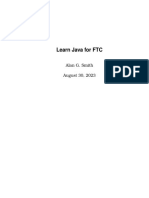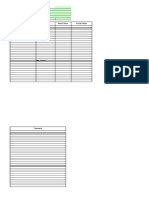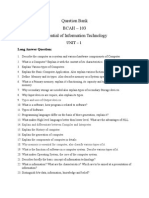0% found this document useful (0 votes)
115 views58 pagesVisual Basic Data Types and Variables
While an attribute is often intuitive, the variable is the operationalized way in which the attribute is represented for further data processing. In data processing data are often represented by a combination of items (objects organized in rows), and multiple variables (organized in columns).
Values of each variable statistically "vary" (or are distributed) across the variable's domain. Domain is a set of all possible values that a variable is allowed to have. The values are ordered in a logical way and must be defined for each variable. Domains can be bigger or smaller. The smallest possible domains have those variables that can only have two values, also called binary (or dichotomous) variables. Bigger domains have non-dichotomous variables and the ones with a higher level of measurement. (See also domain of discourse
Uploaded by
gopalCopyright
© © All Rights Reserved
We take content rights seriously. If you suspect this is your content, claim it here.
Available Formats
Download as PPTX, PDF, TXT or read online on Scribd
0% found this document useful (0 votes)
115 views58 pagesVisual Basic Data Types and Variables
While an attribute is often intuitive, the variable is the operationalized way in which the attribute is represented for further data processing. In data processing data are often represented by a combination of items (objects organized in rows), and multiple variables (organized in columns).
Values of each variable statistically "vary" (or are distributed) across the variable's domain. Domain is a set of all possible values that a variable is allowed to have. The values are ordered in a logical way and must be defined for each variable. Domains can be bigger or smaller. The smallest possible domains have those variables that can only have two values, also called binary (or dichotomous) variables. Bigger domains have non-dichotomous variables and the ones with a higher level of measurement. (See also domain of discourse
Uploaded by
gopalCopyright
© © All Rights Reserved
We take content rights seriously. If you suspect this is your content, claim it here.
Available Formats
Download as PPTX, PDF, TXT or read online on Scribd
/ 58

